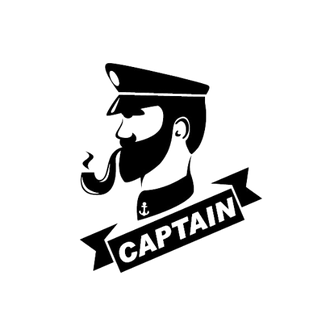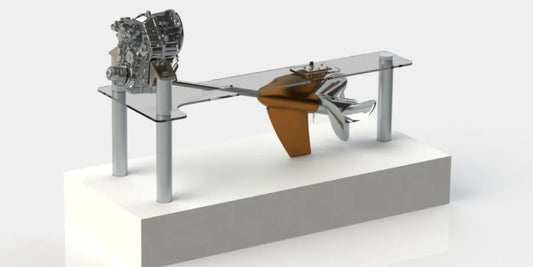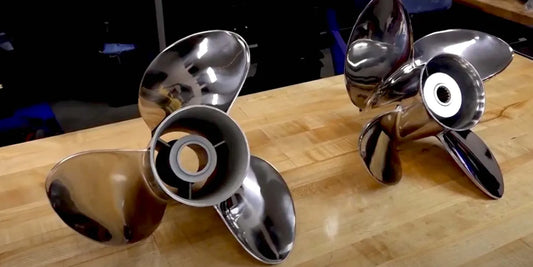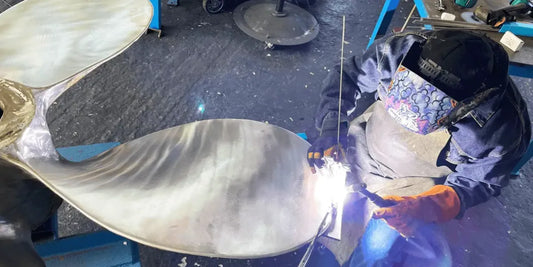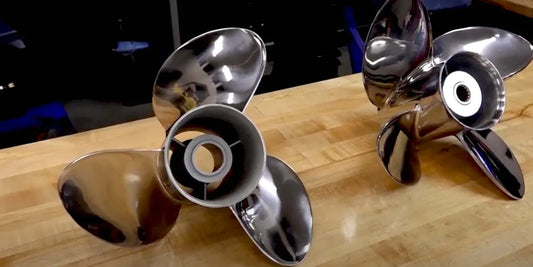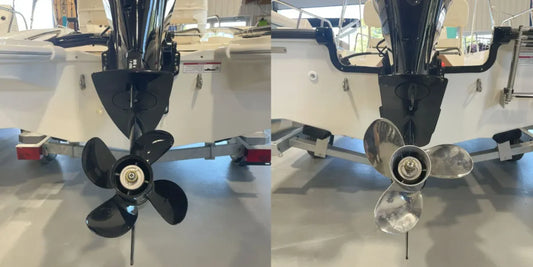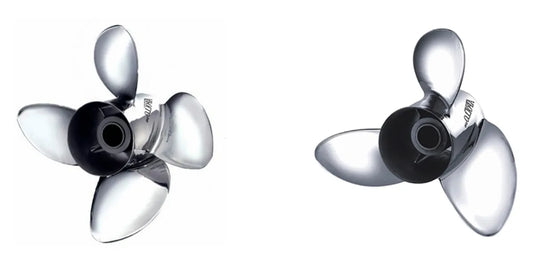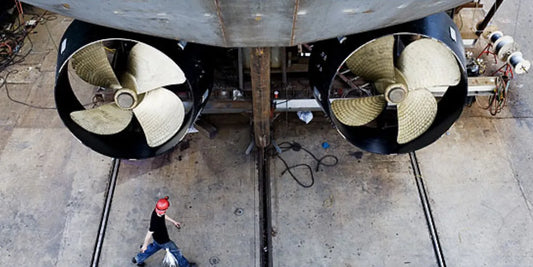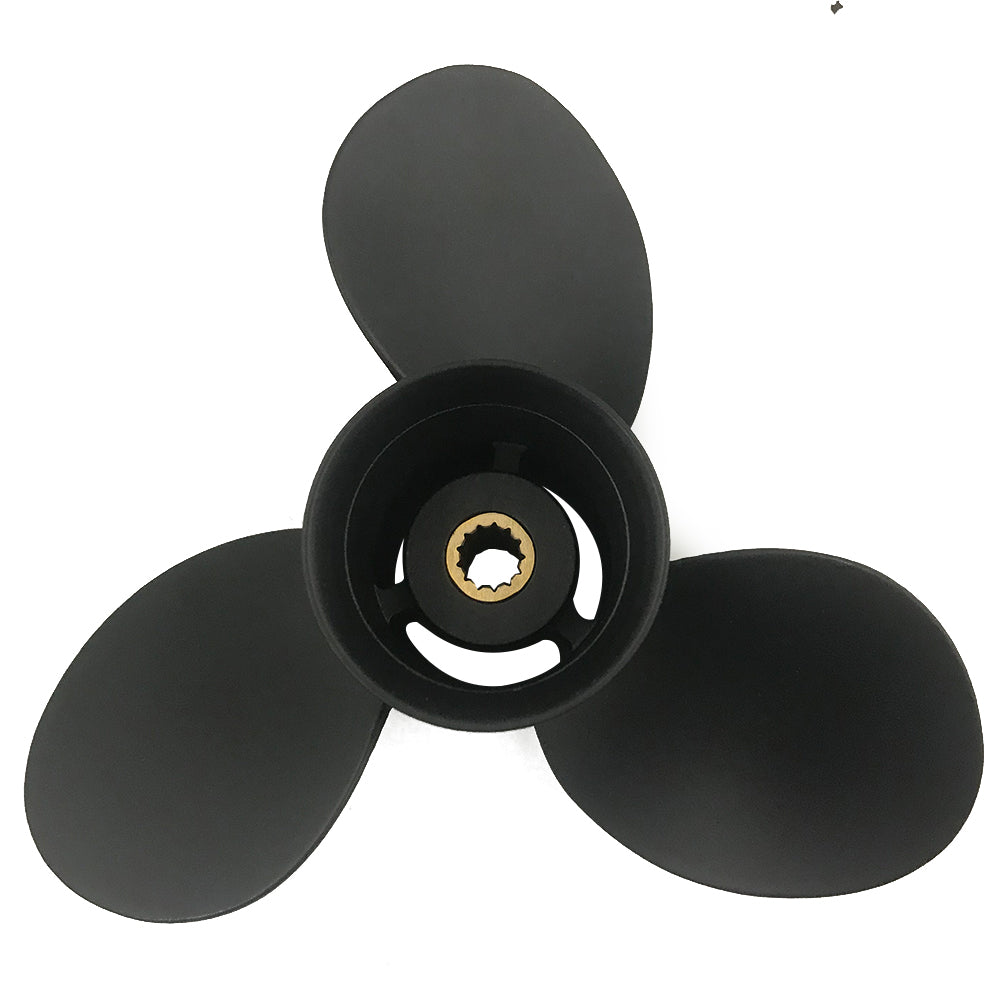The maintenance and upkeep of a working Mercury propeller are necessary for any boat owner to ensure smooth sailing and optimal performance. Whether fishing, recreational, or speed-oriented use, propeller condition directly affects the vessel’s efficiency, fuel economy, and overall usage. But what can be done to keep your Mercury propeller in perfect shape year after year? This article presents the top techniques and maintenance tips to extend the lifespan of your propeller, reduce maintenance and repair costs, and keep your boat performing at its best. We will cover everything, from regular inspections and damage controls, to save this investment and add another chapter of wonderful experiences to your boating life. So stay with us as we break down some of the best-kept secrets every boat-owning family should have at their fingertips.
Understanding Your Mercury Propeller

Types of Mercury Propellers
Mercury offers an eclectic variety of propellers that cater to all boating needs and applications to optimize a vessel's performance in specific water conditions. Here are the primary types of Mercury aluminum propellers and the basic features:
Aluminum Propellers: These propellers are lightweight and durable. Cheaper propellers work well for less severe boating and smaller engines. They strike a balance between price and performance, offering sufficient durability for use in freshwater environments and less demanding settings. The designs also provide smooth operation and decent efficiency.
Stainless steel propellers: Known for their strength and high-performance capacity, they are ideal for high-speed applications and more rugged conditions; they can withstand impacts and corrosion much better than aluminum. Any boating enthusiast will consider this the ultimate investment for propellers, as greater durability and speed are its central attributes. Due to their precision in design and manufacture, the propellers exhibit faster acceleration and improved fuel economy.
Four-Blade Propellers: Four-blade propellers offer a slight enhancement in midrange power and reduce vibration. Excellent grip and maneuverability make these best for water sports or rough water environments. These provide an improved hole shot and maintain steady performance at slow speeds.
Three-Blade Propellers: The traditional three-blade propellers have a strong reputation, primarily for speed and power, with the ability to reach higher speeds for cruising and deliver good all-around performance. They allow versatile use and are considered easy to work with for almost all types of recreational users.
High-Performance Propellers: For those seeking the utmost speed and efficiency, Mercury high-performance propellers offer specialized designs tailored for race and competition scenarios. These models reduce drag while generating thrust, enabling acceleration and top speeds previously unseen.
Each of the above types is made to cater to your specific boating needs, from casual outings to intense adventures. When choosing your propeller, consider it as your key to an optimized boating experience, resulting in better fuel efficiency and reduced wear on your engine.
How Propeller Design Affects Performance
Designing the propeller affects the vessel's operating efficiency, speed, and fuel consumption. The movement of a boat through the water during a specific period depends on the shape of the blades, pitch, diameter, and the number of blades.
Higher-pitch propellers will travel a certain distance through the water or achieve a higher speed for each rotation and require more engine power. Low-pitched propellers provide faster acceleration, making them ideal for heavier boats and towing applications. The diameter of the blade affects thrust generation, while the thinner and more streamlined blades reduce drag, resulting in improved speed performance.
An industrial survey reveals that many blades operate smoothly; however, fewer blades reduce drag, thereby increasing fuel economy. Materials such as stainless steel enhance function and durability, backed by precision for optimal performance. Understanding these factors enables boat owners to choose or adapt propellers that suit their boating needs, thereby maintaining a fair balance between speed, fuel economy, and utility.
Choosing the Right Prop for Your Engine HP
Selecting the appropriate propeller according to the engine HP ensures the best performance out of the water. The engine's horsepower determines, in some aspects, the size and pitch of the propeller. The general rule of thumb is that lower HP engines require smaller diameter and lower pitch propellers, which permit the engines to reach their maximum RPM range efficiently. Large-diameter propellers with higher pitch are best suited for higher HP engines that produce more power for higher speeds and thrust.
For example, an engine of 50 HP might require a propeller with a diameter of 11 inches and a pitch of 12 inches for optimal balance and efficiency. Conversely, a propeller with a diameter of 15 inches and a pitch of 19 inches or above may be fitted to a 200 HP engine that requires larger and heavier fittings to utilize its power effectively and prevent overload. Some of the good tool calculators available through famous manufacturers aid in selecting propeller choices that complement a specific RPM range of the engine.
One also needs to consider fishing or cruising activities, load capacities, and hull types when selecting a propeller for a given engine horsepower. The types of water sports will determine the requirements of a prop, which will have high acceleration for wakeboarding. A heavier load, on the contrary, will ask for a low-pitch prop to facilitate smooth operations. A properly selected propeller, tailored to the engine's horsepower and boating needs, will ensure good performance, prolong engine life, and improve fuel consumption.
Regular Maintenance Practices

Cleaning Your Aluminum and Stainless Steel Propellers
Aluminum and stainless steel propellers must be well-maintained to keep them in working condition and avoid any permanent damage. Both materials, though hard, are potential sites for marine organisms, debris, and corrosion if not cleaned at intervals. The aluminum propellers need inspection for oxidation or any nicks that can affect their performance. Wash away grime with a mild detergent and a soft brush, avoiding abrasive materials that could scratch the surface. Ultimately, apply a spray-on component for anti-corrosion protection to safeguard it against further environmental deterioration.
You need to clean the stainless steel propellers carefully, emphasizing the polished finish to maintain a smooth, aerodynamic surface. Usually, rust or discoloration can be treated with a nonabrasive metal cleaner. Thoroughly clear barnacles or hard deposits that may be glued to the propeller, as these can hamper its smooth running. Also, look for bends and distortions during maintenance to avoid unnecessary strain on the engine. By following these cleaning guidelines, your propellers will remain in excellent condition, facilitating efficiency and elongating their working life.
Damage and Wear Inspection
Regular inspection is crucial in identifying damage or wear on propellers before they develop into serious problems. Closely inspect the edges of the blades for cracks, chips, or pitting. This would result in a loss of structural integrity and reduced performance. A slight imperfection, such as surface dents or abrasions, can alter the balance of the blades, causing vibrations and resulting in inefficiencies. Corrosion should be checked in the hub area, along with any faults, as these issues can cause misalignment or operational failure. By performing a thorough verbal assessment and inspecting the propeller for any irregularities, while also installing corrective measures as soon as possible, you will be able to maintain good performance and avoid expensive repairs.
Equipment items, when properly maintained, are preserved for their intended function, longevity, durability, and efficiency. Storing in a clean, dry, temperature-controlled environment ensures that outside factors, such as moisture, dirt, or cold, are prevented from deteriorating. Excessive humidity fosters rust and corrosive conditions, while excessively high temperatures could cause certain materials to weaken or to warp. With that, through the right kind of storage, you could keep your equipment free from unnecessary wear and tear and thus also from maintenance or frequent replacement.
This means that storing things in order protects equipment and boosts operational performance. Items that are properly labeled and systematically stored are easier to find, which saves precious time during retrieval. For example, racks should be used for tools, shelves for machines, and protective cases for components, ensuring that neither damage nor theft can occur. Proper storage encompasses regular inspection to confirm that items are in perfect condition, which helps minimize risks and ensures readiness when needed. Combining diligent storage with preventive maintenance can further enhance long-term service and economic efficiency for individuals and teams.
Advanced Maintenance Techniques

Balancing Your Propeller for Maximum Performance
Proper propeller balancing is essential to achieve optimal performance and prolong equipment life. Vibration caused by an unbalanced propeller results in increased wear on the mechanical components, leading to an additional reduction in efficiency and balancing checks the relative weight across the propeller blades, allowing them to rotate without producing extra strain on the engine or surrounding systems.
The modern method most commonly employed utilizes advanced instruments, such as electronic vibration analyzers, for enhanced accuracy in detecting irregularities. The procedure typically involves cleaning the propeller of any debris, visually inspecting it for physical damage or wear, measuring it for balance using special equipment, and correcting any irregularities by sanding or otherwise adjusting one or more blades to achieve the proper weight distribution.
Studies show that a well-balanced propeller can reduce vibration-induced maintenance by 30% and improve the overall fuel efficiency of the vessel. Regular inspections, especially just before and immediately after a long run, can detect any imbalances at an early stage and prevent the expense of repairs. By integrating balance checking into routine maintenance, performance is improved, and operational safety and reliability are also guaranteed.
Propellers Dents and Scratches Repairing
Keep dents and scratches on propeller blades fixed to prevent further damage and ensure optimal service. Even minor surface imperfections can interfere with the aerodynamics of the propellers, raising fuel consumption or impeding the processes. Repair methods depend on the material of the blade in question-whether it be aluminum, composite, or stainless steel. For aluminum blades, slight dents are usually repaired by sanding and polishing with precision techniques; larger damages are typically subjected to more serious procedures, such as patching or welding, performed by a qualified technician. Composite blades, on the other hand, would need to be restored with resin-based fillers and would also require similar curing processes.
Any damage must be thoroughly inspected to ensure no hidden structural problems exist. According to research, visual inspections and non-destructive testing (NDT), including ultrasonic or dye penetrant testing, are conducted to detect possible flaws that are sometimes hidden beneath surface damage. Therefore, such preventive care extends the propeller's life and meets safety requirements. When repairing underwater, follow the manufacturer's repair procedures to seek professional assistance and for more complex damages to comply with industry regulations.
When to Seek Professional Propeller Services
Under any severe manifestations of damage, wear, or operational inefficiencies may arise, professional propeller repair and maintenance services are to be considered. For example, some vibrations recur during operation, a phenomenon that can be attributed to an unbalanced propeller, bent propeller blades, or damaged propeller blades. The reduced performance of the vessel can be attributed to factors such as incorrect propeller pitch and surface deformations that may affect its speed or fuel consumption. Besides, if physical damage is observable—such as cracks, corrosion, or chipped edges—Laptop Services should engage immediately to prevent further deterioration.
Regular service intervals for maintenance and upkeep may also require professional services, especially for vessels used heavily in harsh marine environments. Professionals use advanced diagnostic tools and machinery that could reveal hidden structural problems, which need to be addressed for the ship to perform optimally and be safety-compliant. Relying on expert human hands and minds, combined with the use of precision technology, can maintain your propeller's ability to perform and contribute to its overall efficiency.
Choosing the Right Mercury Propeller for Your Needs

What Pitch and Diameter Mean
The two vital parameters that directly affect the performance and efficiency of any vessel are the pitch and diameter of the propeller(s). Pitch stands for the hypothetical distance that a propeller would move in theory through a solid medium, say wood, with one complete revolution, much like a screw. Throughout, higher speed implies a higher pitch; however, if the engine is not powerful enough to support it, then acceleration and, consequently, efficiency are compromised. A lower pitch would serve good acceleration and load capacity, but limit top speed.
The diameter is determined by measuring the circumference of the circle formed by all the blade tips of a propeller, and the larger it is, the more water will be displaced during operation. Larger-diameter propellers are designed for heavier boats or situations where higher thrust is required, such as towing. Conversely, smaller diameters are suitable for situations where higher speeds are desired.
When selecting a propeller, they must be opposed; this is a matter of compatibility with the boat engine's specifications and operation. For instance, a pitch too high for the engine power might stress an otherwise diminished operation. The radius too small or large would cause lesser thrust or make the boat slower. With recent innovations, designers have ventured into variable pitch and lightweight alloys, allowing for specific applications to be adjusted for height, fuel economy, or easy maneuvering.
Comparison Between Vessels: Fury vs. Enertia
The Fury and Enertia propellers impact distinct advantages designed for specific performance goals. Fury blades developed with a three-blade system stand out due to their higher top-speed performance, making them a choice for high-performance boaters. Constructed from the finest stainless steel, taking into account both durability and weight, the blades of Fury transfer power efficiently when spinning at high RPMs. The Fury has the largest diameter of all the varieties in the catalogue, allowing it to capture more water for acceleration and turning without sacrificing top-end speed.
Whereas the Fury was created for racing purposes, the Enertia was developed to provide versatility and fuel economy. In terms of philosophy and technical characteristics, it still features stainless construction, but with lighter materials, and offers a progressively increasing rake angle, which helps with faster planing and greater fuel economy. Such a design is more suitable for medium-range boats or one intent on optimizing cruising performance. This new design also reduces drag to smooth the ride and offers constant delivery in variable water conditions.
Ultimately, choosing between the two profiles depends on the specific situation. The Fury would be the obvious choice for outright speed and top-end performance, while those seeking a mix of efficiency and versatility might find the Enertia a better option. Both acquire modern marine engineering advantages, ensuring reliability, durability, and an enhanced experience on the water.
Evaluating Stainless Steel vs. Aluminum Options
When choosing between stainless and aluminum props, it is essential to have some knowledge of the peculiarities of each material to understand their primary performance and durability. Stainless steel force props are the strongest and most damage-resistant, making them ideal for demanding applications, such as dashing and rough water conditions. Due to their rigidity, stainless steel props can be engineered more accurately to the effects of acceleration and high top speeds, as well as to improve fuel efficiency, when compared to aluminum props. Stainless steel would not inhibit corrosion and thus contributes to the long life of the prop, even in salt environments.
Meanwhile, aluminum props offer a low-cost and lightweight alternative that casual boaters or operators in less-demanding environments would consider. Aluminum props are suitable for smaller engines and low-speed applications. Although they tend to bend or get damaged more easily than stainless steel props, this can sometimes safeguard the propeller shaft from more serious damage. Aluminum props, on the other hand, are generally easier and less costly to fix or replace.
Thus, the choice between stainless steel and aluminum propellers ultimately depends on specific usage needs, budget, and environmental considerations. Stainless steel is an excellent choice for those seeking the utmost performance and durability, whereas aluminum is more affordable and suitable for recreational use in milder waters.
Enhancing Propeller Performance

Moving to CNC Cleaver or Bravo Models
When I look to upgrade to CNC Cleaver or Bravo models, the focus shifts towards the particular improvements these propellers should bring to performance, in my opinion. For the CNC Cleaver models, we are focusing on high-performance applications that deliver incredible speed and efficiency, particularly in the context of precision CNC machining. This means that if I want to push for maximum speed or on a high-performance vessel that measures every little bit, these should be the propellers. Re
On the other hand, Bravo models produced drag and increased lift with the blade design, resulting in better handling and overall speed on water. Ide versatility and durability for vessels that must balance performance with load-bearing capacity. With their precision blade geometry, the Bravo props have been known to provide solid acceleration, mid-range power, and maintain top-end speed. I found them excellent for multi-purpose uses, whether it's towing, cruising, or running fast. Both types of propellers optimize performance, but it ultimately comes down to the specific application and what I intend to do with the boat.
Ultimately, it comes down to the performance goals I choose to pursue and the daily operational patterns of my boat. If I were to discuss speed and control alone, especially in the context of competition or high-speed recreation, then CNC Cleaver. The Bravo series offers more balanced, all-around function and power under varying conditions. Both are excellent options for increasing performance, which means the choice is a practical one for keeping the boat adaptable to my specific needs and preferences.
Gearcase Optimization Tips
The best way to optimize a boat's gearcase begins with maintenance and inspections. I always ensure that the gearcase is free from any debris or marine growth, as this can affect performance and efficiency. Changing gear oil regularly also helps prevent wear and tear on internal parts. I also check for any signs of water coming in or an oil leak, as this may indicate impending damage that requires urgent attention. Being proactive with these basic checks saves me from spending on costly repairs later while keeping the gearcase at optimum functioning.
Another essential factor to consider is finding a propeller that meets my needs. The propeller achieves this by influencing the efficiency of power transmission from the gearcase to the water, so I set it up accordingly, depending on the desired outcome, such as high-speed performance or smooth cruising. I also set it up straight, preventing vibrations and other performance issues. I rely on experts or performance guides to ensure my set is perfectly adjusted for optimal functioning.
Lastly, I never consider it less necessary to lubricate and maintain the seals properly. Good gear oils and regular inspection of seals protect internal parts against corrosion and damage. To maximize the lifespan of my gearcase and achieve peak performance, I follow the manufacturer's recommended servicing schedules. Maximize the efficiency and longevity of my boat's gearcase through acts of vigilance, which add to my enjoyment of boating.
Achieving Better Fuel Efficiency with the Right Prop
How we select our propellers aligns with fuel efficiency and the overall performance of the boat, which is the heart of the issue. For example, either the propeller pitch of my propeller can be too high for the boat's engines or, my propeller can be too low; hence, depending on the power and actual application, a promotion of high pitch can overwork the engines, leading to overconsumption of fuel, while one with too low a pitch will do the job of allowing the engine to over-rev, paying the cost for efficiency. Usually, the above-mentioned conditions for choosing the best propeller come from guidelines provided by manufacturers or recommendations from professionals themselves.
Another feature to consider when choosing a propeller is the material used in its construction. Aluminum props are inexpensive and easy to manufacture, making them suitable for a wide range of recreational uses. The stainless steel props are more expensive but are more capable of withstanding wear and tearing, especially in fast or heavy applications. With the right prop in my hands, I am now set to improve my fuel economy every trip.
Lastly, I make it an absolute point to inspect and maintain my propeller. Any dings, bends, or damage can cause unwanted vibrations and increased drag, while also adversely affecting fuel efficiency. Moreover, keeping the propeller free from fouling or marine growth reduces resistance. This attention to detail yields smoother rides, reduced fuel consumption, and more money in my pocket, while also extending the life of my engine.
Reference Sources
-
Propeller Maintenance - Boat Maintenance Tips
This guide from Mercury Marine provides detailed steps for inspecting and maintaining your propeller. -
Propeller Maintenance
Offers practical advice on checking for nicks, bent blades, and other common issues. -
Outboard Propeller Maintenance Tips
Highlights the importance of cleaning your propeller with water and mild detergent after each use. -
How to Prolong the Life of Your Outboard Propeller
Discusses simple maintenance practices like examining for wear, cleaning, and using the correct oil. -
5 Ways to Extend the Life of Your Aircraft Propeller
While focused on aircraft propellers, this source offers universal tips, such as regular inspections and maintaining propeller balance.
Frequently Asked Questions (FAQs)
What are some advantages of using a stainless steel propeller for Mercury outboards?
Stainless steel propellers are deemed corrosion-resistant and durable, making them particularly suited for marine environments. When paired with Mercury outboards, the propellers can generally increase speed and improve handling due to enhanced thrust and reduced slip. Stainless steel props have typically better performance characteristics than aluminum props, especially in highly demanding applications. This translates directly to better fuel economy and higher acceleration, both of which are crucial in competition. Hence, a stainless steel prop would be a worthy consideration as an upgrade, though serious anglers or racers do not desire it.
How would I pick the best aluminum propeller for my Mercury engine?
Choosing the correct aluminum propeller for your Mercury engine involves several factors, including your boat's size, weight, and intended use. From this standpoint, the pitch and diameter of the propeller will influence the speed and acceleration of the ship. For instance, a 3-blade aluminum propeller offers a suitable force-to-speed ratio for various installations. Additionally, the specific model of Mercury engine should be taken into consideration to ensure compatibility. You may gain a lot of insight regarding the whole situation if you visit with a dealer or learn from propeller artisans.
How do 3-blade and 4-blade Mercury marine propellers differ?
Three and four-propeller designs are designed to suit their characteristics. A three-blade propeller typically gives the highest top-end speed, whereas a four-blade propeller offers quicker acceleration and better handling, especially when under load. For fishing boats or those that require quick cruising and maneuvering, a four-blade propeller is likely the better choice. On the other hand, if you want top speeds on runabouts, opt for a three-blade propeller. Whichever you choose should suit your boating style and performance needs.
How did the Mercury Enertia Eco qualify?
Due to its specially designed features to enhance performance, the Mercury Enertia Eco propeller is a fuel-efficient option. It features a novel blade shape that enhances lift and reduces drag, making it ideal for boating enthusiasts seeking efficiency. This propeller is best suited for those who use Mercury outboards, as it enhances speed and provides improved handling. The design focus is on durability to ensure it stands the test of time with consistent performance. It is also compatible with many engine models from Mercury, making it suitable for a wide range of boats.
How does a Bravo Three propeller system work?
From a morphological point of view, the Bravo Three represents a double-prop system, which provides superior thrust and handling, especially for large boats and sterndrives. The system comes with the lower and upper propellers, which work in synergy to create a more efficient propulsion system. Being one of a kind, it offers better acceleration and superior fuel economy, that have brought it into great favor with boaters. The Bravo Three is best suited for offshore work, able to withstand high horsepower, and is very favorable for performance marine setups. If you are considering upgrades, the Bravo Three system is worth considering.
What importance does pitch hold in propeller selection for Mercury outboards?
The propeller pitch is a determinant of the amount of water displaced in each rotation and, therefore, greatly influences the actual speed of the boat and acceleration. Generally, higher-pitch propellers yield higher speeds but require more horsepower, while lower-pitch propellers increase acceleration and are preferred when towing or carrying heavy loads. When selecting a propeller for your Mercury outboard, consider your typical water activities and choose a pitch that aligns with your expected performance. Switching pitch causes the biggest effect on your boat's performance; thus, it is a critical choice area.
